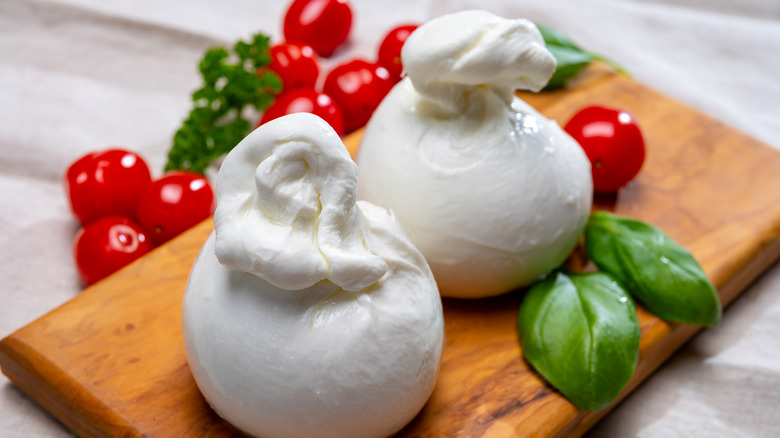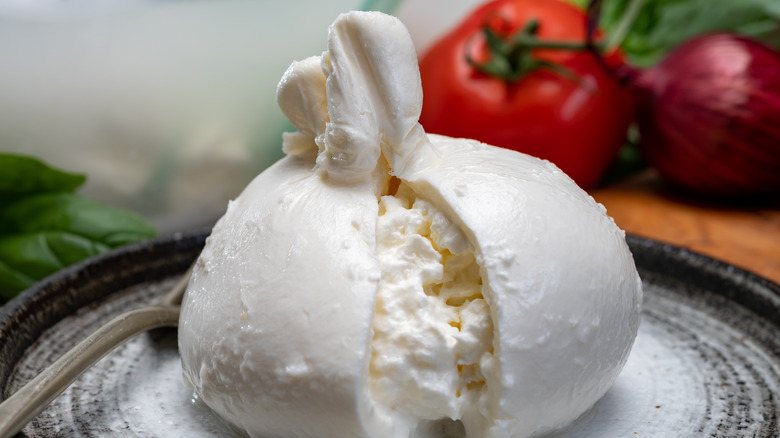Mozzarella Vs. Burrata: What's The Difference?
Everyone knows mozzarella. It's a popular cheese for a reason — and that reason may have something to do with pizza. Mozzarella is a classic pizza topping, best enjoyed with a sprig of basil and a drizzle of olive oil. At-home pizzaiolos can pick up pre-shredded mozzarella from the grocery store or attempt to make real, fresh mozzarella to complement their dough. With whatever mozz you have left over, put together a side Caprese salad. This is one cheese you won't want to skimp on.
Anyone who's ever had a craving for mozzarella has likely come across the cheese's doppelgänger. Like fresh mozzarella, burrata often comes in tubs filled with water and takes a compact, round shape. You don't need much to enjoy the cheese; it tastes great on grilled bread or atop tomatoes.
Yet while burrata and mozzarella look alike — and occupy similar roles in recipes — they're not quite the same. According to Eataly, burrata originates from Southern Italy's Puglia region and is best enjoyed fresh. Because it's such a rich cheese, it works best in simple dishes that allow its flavor and texture to shine. While the same could surely be said about mozzarella, burrata has a creamy consistency that is uniquely its own — a feature that distinguishes it from its better-known cousin.
Burrata combines a mozzarella casing with a gooey, creamy interior
Cow's milk comprises both mozzarella and burrata, which consist largely of stretched curd (via La Cucina Italiana). Both kinds of cheese begin with the same steps. According to Masterclass, the cheese-making process begins by cooking rennet and fresh milk together until the curds and the whey separate. Once the curds are drained and stretched, they're ready to become mozzarella. The stretched curd is used to shape the mozzarella into a ball.
In making burrata, however, the cream comes into play. Nicknamed the "Queen of Italian Cheeses," burrata takes a unique and complex variation on the more standard mozzarella. While burrata still relies on the mozzarella-style curd shell, these curds only create the cheese's outer, elastic-like casing; meanwhile, a combination of soft curds and cream fill that shell. This delicious stuffing oozes out the moment you cut into the cheese, creating an eruption of soft, buttery burrata.
So while mozzarella and burrata look similar on the outside, it's truly what's on the inside that counts.

